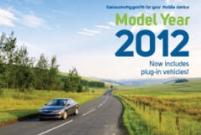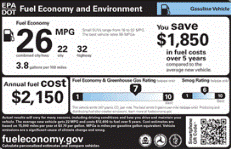Transmission Technologies
* Fuel cost savings are estimated assuming an average vehicle lifetime of 185,000 miles, a fuel price of $3.83, and an average fuel economy of 21 MPG. All estimates are rounded to the nearest hundred dollars.
Potential fuel efficiency improvement:
Energy and Environmental Analysis, Inc. 2005. Automotive Technology Cost and Benefit Estimates. Arlington, Virginia, March.
Average light-duty vehicle fuel economy:
Heavenrich, R. M. 2005. Light-Duty Automotive Technology and Fuel Economy Trends: 1975 Through 2005. Office of Transportation and Air Quality, U.S. Environmental Protection Agency, Washington, D.C.
Average vehicle lifetime:
Calculated based on Transportation Energy Data Book, Edition 24. Oak Ridge National Laboratory, Oak Ridge, Tennessee, Tables 3.9 & 8.13.









